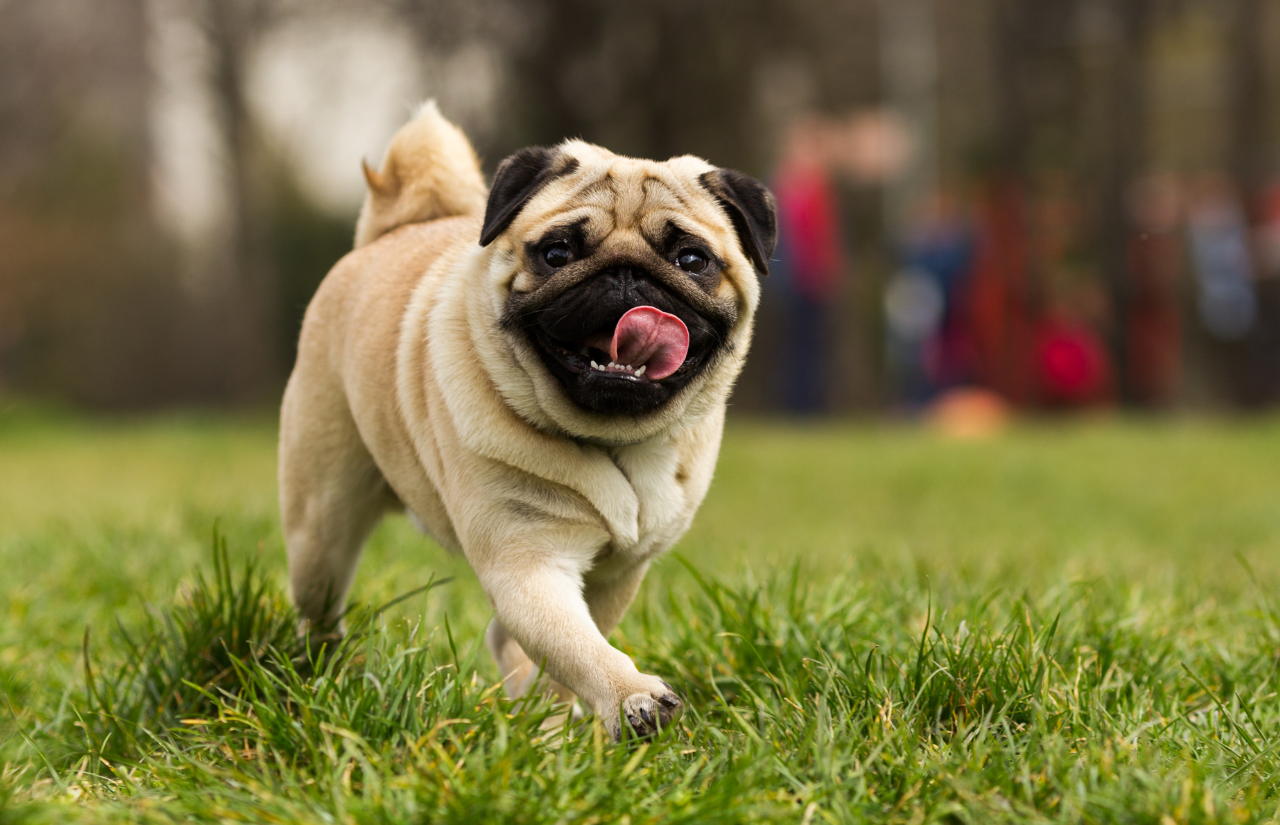Why is My Dog Whining?
Every dog parent knows the sound of their fur baby’s whine. It’s a universal language that transcends breed and size, but what does it mean? This comprehensive guide will help you decode your dog’s vocalizations and understand why your dog might be whining.
Table of Contents
Understanding Dog Communication
Common Reasons for Dog Whining
How to Respond to Dog Whining
When to Seek Veterinary Help
Preventing Excessive Whining
Understanding Dog Communication
Dogs, unlike humans, don’t have the luxury of language to express their feelings, needs, and desires. Instead, they rely on a variety of other communication methods, including body language, facial expressions, and vocalizations like barking, growling, and of course, whining. Understanding these forms of communication is crucial to building a strong bond with your furry friend and ensuring their well-being.
1. Body Language
A dog’s body language can tell you a lot about what they’re feeling. For example, a wagging tail often signifies happiness, while a tucked tail can indicate fear or submission. Similarly, a relaxed body and open mouth usually mean a dog is comfortable, while a stiff body and closed mouth can signal tension or anxiety.
2. Facial Expressions
Dogs also use facial expressions to communicate. Raised eyebrows, for instance, can indicate interest or excitement, while a furrowed brow might mean your dog is confused or concentrating. Ears that are pulled back can signal fear or anxiety, while forward-facing ears often mean your dog is alert and focused.
3. Vocalizations
Vocalizations are another key aspect of dog communication. Barking, growling, howling, and whining can all convey different messages. For example, a high-pitched bark might mean your dog is excited or anxious, while a low, growling bark can signal a threat. Whining, as we’ve discussed, can express a range of emotions and needs, from excitement and attention-seeking to stress and pain.
4. Understanding Your Dog’s Unique Language
While these general guidelines can help you understand dog communication, it’s important to remember that every dog is unique. Just like humans, dogs have their own personalities and ways of expressing themselves. Some dogs might be more vocal, while others rely more on body language. Some might wag their tails when they’re happy, while others wag their tails when they’re nervous.
The key to understanding your dog’s communication is observation and patience. Spend time watching your dog and noticing how they behave in different situations. Over time, you’ll start to understand their unique language and be better equipped to meet their needs and strengthen your bond.
Remember, communication is a two-way street. Just as you’re learning to understand your dog, they’re also learning to understand you. Be consistent and clear in your own communication to help your dog understand what you expect from them.
Common Reasons for Dog Whining
Whining is a primary communication method for dogs. It’s their way of expressing their needs and feelings to their human companions. Here are some of the most common reasons why your dog might be whining:
1. They’re Seeking Attention
Just like human children, dogs can sometimes whine to get your attention. If your dog starts whining when you’re busy or not paying attention to them, they might be trying to tell you they want some quality time with their favorite human. This is especially common in dogs that are highly social and love being the center of attention.
2. They’re Excited
Excitement can also trigger whining in dogs. If your dog starts whining when you grab their leash or when someone they love comes home, it’s likely a sign of their joy and anticipation. This type of whining is usually accompanied by other signs of excitement, like wagging tails and jumping.
3. They’re Anxious or Stressed
Anxiety is a common cause of whining in dogs. If your dog whines when they’re left alone, during thunderstorms, or in unfamiliar environments, it could be a sign of stress or anxiety. This type of whining is often high-pitched and may be accompanied by other signs of stress, like pacing or destructive behavior.
4. They’re in Pain
If your dog suddenly starts whining and can’t seem to get comfortable, they might be in pain. This is especially true if the whining is accompanied by other signs of distress, like limping, lethargy, or loss of appetite. If you suspect your dog is in pain, it’s important to seek veterinary help immediately.
5. They Need Something
Sometimes, dogs whine simply because they need something. This could be a basic need like food or water, or it could be a need to go outside and use the bathroom. If your dog is whining and then leading you to their food bowl or the door, they’re likely trying to tell you what they need.
6. They’re Bored
Boredom can also lead to whining in dogs. If your dog doesn’t get enough physical and mental stimulation, they might start whining out of frustration or boredom. This is especially common in high-energy breeds that need lots of exercise and mental challenges.
Understanding why your dog is whining is the first step to addressing their needs and ensuring they’re happy and healthy. Remember, every dog is unique, and what causes one dog to whine might not be the same for another. It’s important to pay attention to your dog’s other behaviors and body language to get a better understanding of what they’re trying to communicate.
How to Respond to Dog Whining
Responding appropriately to your dog’s whining is crucial. It’s important to address their needs without reinforcing negative behaviors. Here are some strategies for responding to your dog’s whines in a way that promotes positive behavior and strengthens your bond.
1. Identify the Cause
The first step in responding to your dog’s whining is to identify the cause. As we’ve discussed, dogs whine for a variety of reasons, from needing something to feeling anxious or excited. Pay attention to the context and your dog’s other behaviors to understand what they’re trying to communicate.
2. Meet Their Needs
If your dog is whining because they need something, like food, water, or a bathroom break, make sure to meet these needs promptly. This not only addresses the immediate cause of the whining, but also reinforces the idea that whining is an effective way for your dog to communicate their needs.
3. Provide Comfort
If your dog is whining out of anxiety or fear, it’s important to provide comfort and reassurance. This might involve petting them, speaking in a soothing voice, or providing a safe space where they can relax. However, be careful not to reinforce the fear or anxiety. Instead of coddling your dog, try to redirect their attention or engage them in a calming activity.
4. Ignore Attention-Seeking Whining
If your dog is whining for attention and they don’t need anything, the best response might be to ignore them. This can be difficult, especially if the whining is loud or persistent, but giving in can reinforce the behavior. Instead, wait until your dog is calm and quiet before giving them attention.
5. Seek Professional Help
If your dog’s whining is excessive or you’re struggling to identify the cause, it might be time to seek professional help. A professional dog trainer or behaviorist can help you understand why your dog is whining and provide strategies for addressing the behavior.
Remember, patience and consistency are key when dealing with dog whining. It can take time for your dog to learn new behaviors, so don’t get discouraged if the whining doesn’t stop immediately. Keep working at it and remember to reward your dog for quiet, calm behavior.
When to Seek Veterinary Help
While whining is a normal part of dog communication, sometimes it can be a sign of a medical issue. It’s important to know when to seek veterinary help for your dog’s whining. Here are some signs to look out for:
1. Sudden Increase in Whining
If your dog suddenly starts whining more than usual, it could be a sign of a medical problem. This is especially true if the increase in whining is accompanied by other changes in behavior, such as loss of appetite, lethargy, or changes in sleep patterns.
2. Whining During Specific Activities
If your dog whines during specific activities, like going up and down stairs, jumping, or during bowel movements, it could be a sign of pain or discomfort. This type of whining is often a sign of joint issues, gastrointestinal problems, or other medical conditions.
3. Whining Accompanied by Other Signs of Distress
If your dog’s whining is accompanied by other signs of distress, like pacing, panting, or excessive licking, it’s time to call the vet. These behaviors can be signs of pain, discomfort, or anxiety, and should be addressed as soon as possible.
4. Whining That Doesn’t Respond to Comfort or Distraction
If your dog continues to whine despite your attempts to comfort or distract them, it could be a sign of a medical issue. This is especially true if the whining is high-pitched, persistent, and doesn’t seem to be linked to any specific need or desire.
5. Changes in the Sound of the Whine
Changes in the sound of your dog’s whine can also be a sign of a medical issue. For example, a whine that becomes more high-pitched or strained could be a sign of respiratory issues or throat pain.
If you notice any of these signs, it’s important to seek veterinary help as soon as possible. Your vet can perform a thorough examination to identify the cause of the whining and recommend appropriate treatment. Remember, it’s always better to be safe than sorry when it comes to your dog’s health.
Preventing Excessive Whining
While some whining is normal, excessive whining can be a sign of a problem. Here are some strategies to prevent excessive whining and promote a calm, happy environment for your dog.
1. Provide Plenty of Physical and Mental Stimulation
One of the most common reasons for excessive whining is boredom. Dogs need plenty of physical exercise and mental stimulation to stay happy and healthy. Make sure your dog gets plenty of walks, playtime, and interactive toys to keep them occupied. Training sessions can also provide mental stimulation and help curb unwanted behaviors.
2. Establish a Routine
Dogs thrive on routine. Having a consistent schedule for meals, walks, and bedtime can help reduce anxiety and prevent excessive whining. Make sure to stick to your routine as closely as possible, even on weekends and holidays.
3. Use Positive Reinforcement
Reward your dog for quiet, calm behavior. This can help reinforce the idea that they don’t need to whine to get your attention. Use treats, praise, or petting as rewards, and make sure to give them immediately after the desired behavior.
4. Ignore Attention-Seeking Whining
As mentioned earlier, if your dog is whining for attention and they don’t need anything, the best response might be to ignore them. Wait until your dog is calm and quiet before giving them attention. This can help break the cycle of attention-seeking whining.
5. Seek Professional Help
If your dog’s whining is excessive or causing problems, don’t hesitate to seek professional help. A professional dog trainer or behaviorist can provide strategies and techniques to help manage your dog’s whining.
Remember, preventing excessive whining is about more than just stopping the noise. It’s about understanding your dog’s needs and providing a safe, comfortable environment where they can thrive. With patience, consistency, and a little help from professionals if needed, you can help your dog express themselves in healthier, quieter ways.

